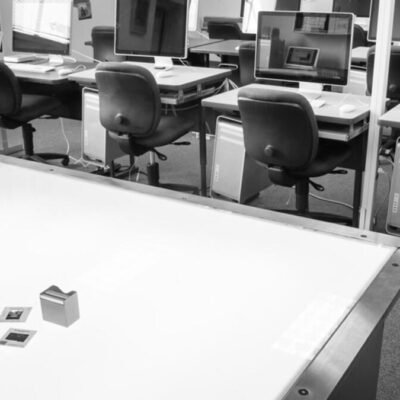
Curate your portfolio like the Great Indian Thali
Think of asset allocation like your diet. Dal chawal is an all-weather staple across India; a low-key hero that never lets you down. As a child, whenever I fell sick, my mother would cook up a comforting plate of dal chawal to ensure I stayed nourished and recovered sooner. It has remained at the core of my diet to this day. Similarly, your financial diet will also have a core portfolio. This is the dal chawal of your investments: something that has stood the test of time. Your core portfolio should ideally be built of long-term diversified funds like multicap funds, or large-cap and mid-cap index funds, or broad-based index funds. These are generally simple, timeless ideas that fit for all seasons.
Then comes your satellite portfolio—the chutney and dessert that add excitement and zest to the meal. During the course of your life, you might occasionally embark on exciting adventures like going for a scuba dive or attempting a triathlon. The satellite is like this little adventure: a smaller, dynamic portion of your investments to complement the stability of your core. These comprise the bold, opportunistic assets—sector specific mutual funds and international stocks—that have the potential to offer higher returns but also come with greater volatility. And while a chutney can pack a punch, it is meant to be consumed in moderation and cannot comprise the bulk of your meal. The aggregate of these investments should ideally make up less than 20 per cent of your portfolio.
 ₹399″ title=”‘Mango Millionaire: Smart Money Management For a Sweeter Lifestyle’ by Radhika Gupta with Niranjan Avasthi, Pan Macmillan India, 280 pages, ₹399″>
₹399″ title=”‘Mango Millionaire: Smart Money Management For a Sweeter Lifestyle’ by Radhika Gupta with Niranjan Avasthi, Pan Macmillan India, 280 pages, ₹399″>View Full Image
One of the most common mistakes people make while investing is to focus too much on their satellite portfolio. Many investors get distracted by the trees of which sector fund to buy or which fund in China to invest in, and sadly, lose sight of the woods. It’s a bit like going on vacation, visiting a novel restaurant, only to end up having a two-hour conversation about the kind of oil they use and never even savouring your meal! Fact remains that the oil at that one restaurant won’t affect your long-term health. But the oil you use at home? It matters a lot more because you consume it daily. The home oil is your core portfolio, which deserves the bulk of your time and attention. Once you get your core right, you won’t need to worry about the rest—but even the spiciest chutney can’t save a bad meal.
How to start creating your portfolio
My nephew had just received a hefty bonus from his job in software engineering and was brimming with ideas. He told me about his three big dreams: a vacation to Europe in six months, saving for a house in three years, and building a retirement fund over twenty-five years.
‘But where do I start?’ he asked.
I introduced him to the bucket approach, which begins with breaking your goals down into smaller parts with clear timelines. For his vacation, I suggested he maintain liquid funds for safety and easy access. We allocated 10 per cent of his corpus to this. For a short term goal, it is best to not expose your wealth to market risk.
For his house goal, we allocated 30 per cent to balanced advantage funds or BAFs. These are a type of mutual fund that dynamically adjust investments between equity (stocks) and debt (bonds) based on market conditions. They are designed to provide a balance of growth and stability, making them a popular choice for investors with moderate risk appetite. As for his retirement plans, we allocated 60 per cent for multicap and small-cap funds, which provide high returns but come with higher risk. Staying invested for a long term reduces the risk as markets generally recover from any dips in time, so it would ensure he is comfortable by the time his retirement comes around.
If you do not have a specific goal in mind for your investment, your investment would typically fall in the long-term category. But if, for example, your goals would do well with an 80 per cent allocation to equities, but your risk appetite or psychology doesn’t allow it, then you may want to temper your equity allocation down to a lower percentage. Remember: risk appetite differs from person to person. My father is a senior citizen, but he has a higher risk appetite with exposure to the market through equities, owing to his steady pension and fewer expenses. But I also know of colleagues at work in their mid-twenties, who are averse to market risk due to financial and family constraints. So asset allocation is highly personal and differs for each individual.
Rebalancing your portfolio
Amarjit Singh was the owner of a sports goods factory in Ludhiana. He was making good profits selling hockey sticks to retail outlets across India. Using his booming profits, he invested a good amount of money in the market in the post-COVID era, once the markets had recovered and were on a rise. Unsurprisingly, he had enjoyed what seemed like an endless bull run from 2022 to mid-2024.
In October 2024, however, the Indian stock market turned highly volatile due to weak corporate earnings, foreign investor removing money from Indian markets and a weakening rupee. Amarjit was desolate; he sat staring at the state of his investments. Equities in his portfolio had surged from 60 per cent to 80 per cent during the boom, but now they were dragging the overall value of his portfolio down. He had delayed what is known as ‘rebalancing’, thinking ‘Why fix what isn’t broken?’
But suddenly, everything had changed—this was a wake-up call. Amarjit realized that enjoying high returns without adjusting his portfolio was like skipping annual health check-ups. At first, everything feels fine, but over time, imbalances can creep in. And by the time you notice, damage may already have been done.
Just like regular health check-ups can catch issues early and keep you in good shape, rebalancing can help catch portfolio imbalances early on and keep your finances fit. Market fluctuations, like lifestyle changes, can throw things out of balance suddenly. Rebalancing is a reliable way of diagnosing and fixing any issues before they become problems, ensuring your financial goals stay on track.
Excerpted with permission of Pan Macmillan India from ‘Mango Millionaire’.







No Comment! Be the first one.